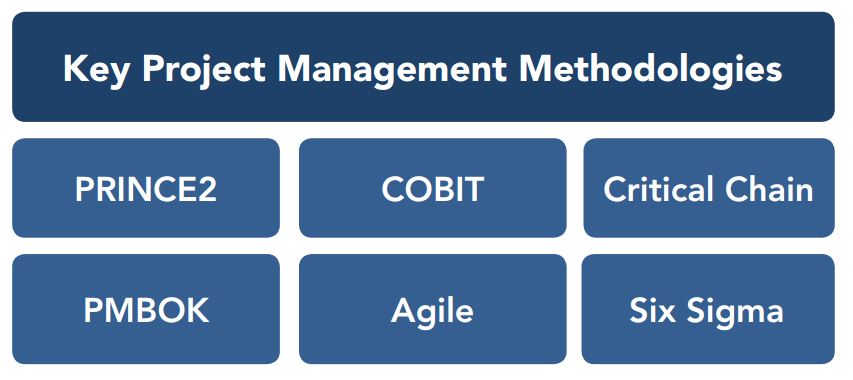Why Investment Bankers are (or should be) among the world’s most prolific Project Managers
The last decade has seen a surge in the world of professional project managers. In most instances, project management (PM) methodologies are used for specific IT-related projects, but now that nearly every company has some IT-based core processes, project management is becoming an integral part of almost every conceivable organization. Unfortunately, the finance world is among a handful of industries that have yet to fully embrace the idea of project management methodologies and processes, including the technology that streamlines them. Larger bulge-bracket investment banks and most larger public companies running concurrent buy-side processes are familiar with the likes of SharePoint and Microsoft Project for running a quality process. Their counterparts in the middle-market, however, are often woefully ignorant to streamlining operating procedures through PM techniques that can facilitate the faster closing of more quality, client-aligned deals. Here we will discuss:
- Different project methodologies and how they are crucial to successful project management
- Types of investment banking services and how they absolutely require streamlined systems and processes available through project management
- An introduction to the deal project management systems we are building to help investors, issuers and entrepreneurs in making the investment banking process more streamlined and efficient
In a previous life I worked hand-in-hand with some well-known project management software providers. In doing so, I gained a good cursory education into what project management entails and the basic ins and outs of the industry. In doing so, I have come to understand a few principles that have provided incalculable support to me and my investment banking teams. A number of differing yet similar methodologies exist for facilitating a project process.

Because each deal, regardless of type or size, requires accountability and scalability across all stakeholders to the transaction, there needs to be a keen adherence to systems and processes to ensure the ultimate objective is reached. In short, your investment banker should be as familiar with project systems and processes as s/he is with balance sheets, income statements and an investor database. Here are some solid reasons each deal should be treated more like a project than a capital transaction.
Clearly Defined Objectives
One of the things I love about investment banking is there is a clearly defined objective to each deal. Each project rarely excludes a clearly defined goal or objective. Each goal or objective should be measurable and achievable. Without the ability to measure and provide feedback, the transaction may suffer from lack of focus and poor accountability metrics. When these are lacking, speed decreases and the potentiality for failure increases. Clear objectives with a buy-in from all stakeholders pursuant to the deal helps to drive the deal toward a successful finish.
Understanding Deal Constraints
Any factor that may have a potential limiting impact on the deal is referred to as a constraint. Common constraints that plague deals are timing, scope and cost. It’s similar to the old cost, quality, speed conundrum. Deal costs can include both dollars, people and processes (including technology). Timing includes internal and external (including macro) factors that can significantly impact the quality of outcomes on a deal.
Understanding the constraints help deal makers pursue the project in such a way that boundaries are understood and, if possible, eliminated.
The Deal Lifecycle
Like project managers, investment bankers have defined start and end dates within which their deal objectives must be met. This is referred to as the project lifecycle. While some flexibility may exist with some transactions, other deals may be very clearly defined (e.g. capital formation projects). The lifecycle must also occur within the constraints and limited resources defined at the project outset.
Transactions Have Numerous Stakeholders
In typical project format, capital transactions include numerous and often unwieldy different stakeholders. Involving each of these stakeholders early and often is critical for maintaining outcomes that are aligned with project goals. Stakeholders may include any number of the following:
- Issuer. An issuer of securities is typically a company engaging in a capital requisition project, recapitalization or complete sale of the business. A business engaged in a capital raise or a sell-side mandate would both fall under the general description of “issuer.”
- Investors. Investors groups could include anyone that buys securities on either a minority or majority basis. Private equity groups, companies and individuals could all be considered investors to a transaction.
- Investment bank. On the investment banking side are the registered reps, their associates, analysts and other supporting members of the deal team.
The stakeholders listed above are likely much too high-level for assessment of any real project. For instance, an issuer is likely to have multiple sub-stakeholders whose concerns, input and personal tasks in a capital transaction play a crucial role. In fact, smaller stakeholders may be asked to complete tasks that are part of the critical path which, if not tracked, could become a bottleneck source to completing a deal within the allotted time parameters. Like any good project manager, a successful investment banker takes into account (and matches) processes, tasks and individual stakeholders within the capital transaction on a granular level to ensure the deal runs as smoothly as possible. The larger the deal, the more reliant the investment banker becomes on standard procedure, software and technology to assist in streamlining.
Personal connections—at some level—are necessarily established with every stakeholder in a transaction with an ultimate drive toward leadership, ownership, accountability and trust.
The Most Basic “Projects” of an Investment Banker
We investment bankers are simple creatures. While our projects have unlimited numbers of nuances, twists and turns, we really only follow one of three general paths in a transaction:
- Capital raise process
. This process deviates somewhat depending on whether the issuer is pursuing retail, accredited or institutional investors, but the overall Gantt and management are similar. Complexities and difficulties arise as the issuer moves to the retail level on a capital raise. SRO compliance demands greater clarification and hoops to decrease project risk. - Sell-side M&A
. Perhaps one of the simpler projects an investment banker can run is for sell-side M&A. Depending on the type of sell-side auction the investment banker is running, s/he may need to significantly decrease the number of project steps to simplify the process. Project complexity in this realm is typically correlated with both the size of the deal and the size of the buyer list.
- Buy-side M&A
. Like sell-side M&A, buy-side processes include similar, but often more detailed, processes for due diligence and closing. Unlike their sell-side cousin, buy-side Gantt charts often include more detailed descriptions and procedures relative to target sourcing outreach, assessment and follow-up. - Deal integration
. An often overlooked, yet critical component to buy-side M&A, is the process for deal integration. A deal integration process is interwoven and in parallel with the buy-side process, but remains its own. This particular project typically begins long before a transaction is contemplated and ends much later than closing. Deal integration takes into account things like cost savings and the ever ethereal idea of transaction “synergies.”
Perhaps an entire treatise could be concocted to discuss how each of these processes might deviate or change, but it is helpful to note that some level of repetition provides experience for the clients of those who pay the bankers for their time.
Reuse of Processes & Tools
Because the nature of each transaction lends itself to repetition, it is at least somewhat helpful that investment bankers can reuse the systems, processes and buyer lists used in previous deals to assist in closing the next big opportunity. It saves effort, time and money on the part of the investment banker, but it lends itself to expertise and speed on the part of the issuer—which is a win when internal and macro forces for timing play a crucial role in proper timing for a transaction.
Time & Risk Management
Deal decision making is often depending on two relevant stakeholder questions:
- How will this effect timing of deal outcomes?
- How will this impact the risk of the project?
Typical project managers assess risk and timing openly and often. Investment bankers do the same, particularly on riskier transactions (e.g. Reg D 506c). FINRA and SEC rules require registered representatives to be monitored for risk and be transparent and compliant in their actions in regard to pitching securities to investors.
But while the risk management piece comes built-in to the process, it doesn’t preclude investment bankers from ensuring it makes it into their Gantt charts and outline. Risk, compliance and time mitigation remain three of the most hotly-focused areas for investment banking tracking.
What M&A Project Integration Managers Do
Inject Speed
The head of the PMI team works to maximize the speed of project integration and works to ensure the deal goes through as quickly as possible. The aspect of mergers which can be inefficient and capital destructive generally has to do with personnel management which usually has to do with lack of speed. The PMI manager works to ensure speed happens much more rapidly.
- Ramp up planning efforts
- Accelerate implementation in general
- Push for decisions and actions
- Monitor progress against goals and pace the integration efforts to meet deadlines
Create Structure
Have you ever hear of Microsoft Project Manager? This is where it is used. Setting up guideposts and goals and then working through the necessary processes to see it through is part of creating and maintaining structure throughout the process.
- Provide flexible integration frameworks
- Mobilize joint teams
- Create key events and timelines
- Facilitate team and executive reviews
Make Social Connections
Because personnel management is so crucial to efficiency and getting things back on track, managing the social aspects of the deal can be extremely important. In fact, lending a listening ear is probably one of the most important aspects of this part of deal management.
- Act as traveling ambassador between locations and businesses
- Serve as a lightning rod for hot issues; allow employees to vent
- Interpret the customs, language and cultures of both companies
Engineer Success
Recognizing synergies is difficult. Because the PMI team is responsible for determining synergies and eventually recognizing them, making sure they are implemented is difficult. The onus falls upon project integration members to make sure this happens rapidly.
- Help identify and exploit critical business synergies
- Launch 100-day projects to achieve short-term, bottom-line results
- Orchestrate transfers of best practices between companies
Conclusion
While I am obviously a huge advocate of maintaining a solid understanding of project management principles within investment banking, I also firmly believe that the project tools should fit the engagement. Because many of our internal processes are scalable up to multi-billion dollar transactions, it is often more work to scale them back than to simply create a new project or process. Ensuring investment bankers maintain the level of detail they need at the various stages of a deal is appropriate for the size and scope of the transaction can be critical for ultimate deal success and keeping stakeholders engaged (and not confused).
The ultimate goal of both projects and capital advisory services is to deliver excess business and financial value to clients through the accomplishment of timely milestones and deliverables. Doing so requires a good mix and understanding of today’s most relevant project principles as well as a keen eye toward technology that can help scale a transaction toward greater outcome quality and speed. How does your investment banker measure up?
- Covid-19 Impact on US Private Capital Raising Activity in 2020 - May 27, 2021
- Healthcare 2021: Trends, M&A & Valuations - May 19, 2021
- 2021 Outlook on Media & Telecom M&A Transactions - May 12, 2021
